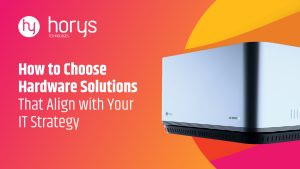Artificial Intelligence (AI) and Machine Learning (ML) are driving transformative changes across industries. These technologies are the backbone of innovations such as self-driving cars, natural language processing, personalized healthcare, and more. While the software side of AI/ML often gets the spotlight, the hardware solutions that power these systems are equally critical. Advanced hardware enables the processing of massive datasets, accelerates computations, and supports real-time deployment of AI applications.
This in-depth exploration delves into the role of hardware solutions in powering AI and ML, focusing on the essential components, applications, challenges, and emerging trends that define this rapidly evolving field.
Hardware Solutions in Powering AI and Machine Learning
Artificial Intelligence and Machine Learning are reshaping how we interact with technology, from predictive analytics to advanced robotics. At the core of these advancements lies the hardware that makes it all possible. AI/ML workloads require high computational power, low-latency processing, and massive data handling capabilities, making specialized hardware solutions indispensable.
Why Hardware is Crucial for AI and ML
- Parallel Processing: AI models, especially deep learning, involve matrix computations that demand high levels of parallel processing.
- Scalability: Hardware solutions like GPUs and TPUs support the scaling of AI models for larger datasets and more complex architectures.
- Real-Time Processing: Edge hardware enables AI to function in real-time applications, such as autonomous vehicles and IoT devices.
- Energy Efficiency: Specialized chips are designed to balance performance with power consumption.
1. GPUs: The Backbone of AI Processing
Graphics Processing Units (GPUs) are at the heart of most AI and ML workloads. While originally developed for rendering graphics, GPUs excel at parallel processing, which is essential for training and running neural networks.
Key Features of GPUs for AI
- Parallelism: GPUs can handle thousands of simultaneous operations, making them ideal for tasks like backpropagation in deep learning.
- Memory Bandwidth: High bandwidth ensures that large datasets can be processed efficiently.
- Tensor Core Technology: Modern GPUs, such as the NVIDIA A100 Tensor Core, feature dedicated cores for tensor operations, accelerating matrix multiplications crucial for deep learning.
Leading GPU Providers
- NVIDIA: Dominates the AI hardware market with solutions like the NVIDIA RTX 4090 for development and NVIDIA H100 for enterprise-grade workloads.
- AMD: Offers competitive GPUs like the Radeon Instinct MI200 for high-performance AI applications.
2. CPUs and Their Role in AI and ML
While GPUs handle heavy computational workloads, Central Processing Units (CPUs) remain integral to AI/ML tasks such as data preprocessing, model deployment, and real-time inference.
When to Use CPUs for AI
- Data Preparation: CPUs excel at single-threaded tasks like data cleaning and formatting.
- Inference: CPUs like Intel Xeon Scalable Processors are ideal for real-time deployment of AI models where latency is critical.
Multi-Core CPUs for AI
- Multi-core CPUs enhance throughput for smaller workloads, such as edge devices and inference tasks.
- Popular options: AMD EPYC, Intel Xeon Platinum.
3. TPUs: Specialized AI Hardware
Tensor Processing Units (TPUs), developed by Google, are custom-built for deep learning tasks. Designed for TensorFlow, TPUs are optimized for tensor operations, making them a strong choice for large-scale AI workloads.
Advantages of TPUs
- Faster Training: TPUs accelerate matrix-heavy computations required by neural networks.
- Cost-Effectiveness: TPUs offer high performance per watt, reducing operational costs.
4. Edge AI Hardware
Edge AI processes data locally on devices rather than relying on cloud infrastructure, enabling faster decision-making and enhanced privacy.
Key Edge AI Hardware
- NVIDIA Jetson Nano: Ideal for robotics and smart cameras.
- Google Coral Edge TPU: Optimized for TensorFlow Lite.
- Intel Movidius: Targets applications like drones and AR/VR.
5. Storage Solutions for AI and ML
AI/ML workloads generate and consume massive amounts of data, making high-performance storage a necessity.
Storage Hardware
- NVMe SSDs:
- High-speed storage for quick data access.
- Examples: Samsung 980 Pro, WD Black SN850.
- Data Lakes:
- Scalable storage for unstructured data, crucial for AI training datasets.
6. Networking Hardware for Distributed AI
Distributed AI involves running workloads across multiple devices or systems, requiring specialized networking solutions.
Key Hardware
- InfiniBand: Low-latency interconnects for GPU clusters.
- Examples: Mellanox ConnectX.
- AI-Specific Networking Solutions: Tools designed to optimize distributed AI workloads.
7. Hardware Accelerators: FPGA and ASIC
Field-Programmable Gate Arrays (FPGAs) and Application-Specific Integrated Circuits (ASICs) are hardware accelerators tailored for specific AI/ML tasks.
FPGA Advantages
- Flexibility: Programmable for unique workloads.
- Example: Intel Stratix 10.
ASIC Advantages
- Efficiency: Pre-configured for specific tasks, such as Google’s TPU for TensorFlow.
8. Data Center Infrastructure for AI
AI-specific data centers are designed to handle the high power, cooling, and computational demands of modern AI workloads.
Key Features
- AI Supercomputers: Built with thousands of GPUs or TPUs.
- Example: NVIDIA DGX SuperPOD.
- Cooling Systems: Advanced liquid cooling for high-performance clusters.
9. Neuromorphic and Quantum Computing
Emerging technologies like neuromorphic hardware and quantum computing represent the next leap in AI hardware.
Neuromorphic Computing
- Mimics the structure of the human brain for energy-efficient AI computations.
- Examples: Intel Loihi, IBM TrueNorth.
Quantum Computing
- Potential to solve problems beyond classical computing capabilities.
Challenges in AI Hardware Deployment
- High Costs: Advanced hardware like GPUs and TPUs are expensive.
- Integration Issues: Legacy systems may not support cutting-edge hardware.
- Skill Gaps: Teams require specialized training to utilize AI hardware effectively.
Conclusion: Hardware Solutions in Powering AI and Machine Learning
AI and ML are shaping the future of industries, and hardware solutions are the foundation of this transformation. From GPUs and TPUs to edge AI and emerging technologies like quantum computing, these tools are driving efficiency, innovation, and scalability. Businesses that invest in cutting-edge hardware will lead the charge in the AI-driven world.
About Horys
A premier hardware and software solutions company, Horys’ technology is on par with global standards. Its offerings include a variety of hardware products like smartphones, tablets, and computers. And software products include server hosting and management solutions.
Disclaimer: This article combines insights from both human expertise and AI technology to provide informational content. It is for informational purposes only and should not be interpreted as financial advice or a recommendation to invest. Virtual asset investments are inherently volatile and risky. Horys provides no guarantee of accuracy or completeness for the information herein. Independent research and professional advice are recommended before engaging in any investment activity. Horys bears no liability for investment decisions based on this article.



